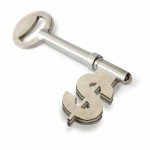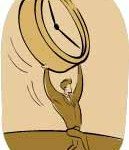Calculating Design Fees
Calculating design fees is based on a simple system called cost based pricing. It is a method of working out your charge out based on costs direct and indirect. As designers we provide design services and sometimes we trade products. Cost based pricing is a way to establish our costs in either situation to determine how much money we need to charge on a good or service to make a profit. In other words calculating design fees.
There are many ways to charge for a project and this is one I use. I will demonstrate others on different pages but in the meantime as a designer you will need to get your head around this. Take a scrap of paper and note down the main points to help you remember and then try a few examples yourself. There are no illustrative diagrams here but its an important part of being a professional designer, so read on and try a few of the examples and then adapt it to your own practice. There are other articles that should be read in conjunction with this including establishing a budget for your business. While designers usually hate numbers if you read these articles, or even subscribe to the one of the business practice tutorials to come, you will be well on your way to getting the most out of your business and freeing yourself from financial stress.
The Elements of Cost
First we find the elements of cost. This will be the cost of materials directly linked to the product or service. For example printing, travel, sampling, telephone and cell phone calls.
Then the cost of the labour. This is the rate of pay that you or your staff receive as they produce the work. Your designer, your CAD technician, your project manager all have direct labour costs.
And finally cost of over heads, this should include rental, insurances, electricity, vehicles, sundry items such as tea and coffee and administration staff if you have them.
Use a spread sheet as depicted here to note all overheads Annual Budget
Now you have established your direct and indirect costs to the business.
Printing, travel, sampling, telephone and cell phone calls will all be charged directly to the client as part of the disbursements for each project.
The cost of your labour will all be direct costs and taken off the bottom line (reduced from your profit) so let’s say you and two staff all drawing salaries of $70,000 per year and whatever bonuses you and your accountant deem fit. Your salaries are going to be around the $210,000 to $240,000 per year.
What are my overheads?
Now you have overheads to consider. Rent say $30,000 per year, telephone say $4,000 per year, electricity say $5,000 per year, and a whole bunch of other stuff that’s outlined in the budgeted spread sheet accompanying this article. I’m going to round up the overheads to $55,000 per year.
Pricing Services
I have kept this as simple as possible.
Calculate your direct labor costs.
Estimate how many hours are likely to be charged to clients during the year. Be realistic and ruthless here. You must have a minimum amount of hours otherwise you will immediately lose money.
Now deduct the following:
Annual and statutory holidays
Sick leave
Training time
Non chargeable time
Now divide the expected revenue to get the direct labor charge per hour.
For example you have 2 staff and you. That’s approximately 112.5 hours per week to be charged out 112.5 x 52 = 5,850 hours
Subtract holidays say 4 weeks per person including stats that = 450 hours per year.
Training time allow an hour per week per person = 156 hours per year.
Non chargeable time say 15 percent of the week or about an hour a day per week or 877.24 hours per year. It is frightening when we undertake task we find out just how much time we waste as designers.
So
5850 hours
-450 hours
-156 hours
-877.24 hours
= 4366.76 chargeable hours for the year
Take the revenue you expect (or want) for the year and divide it by the hours. Say $500,000 /4366.76 means you will need to have a charge out rate of $114.5 dollars per hour.
Now we’ve looked at our overheads and chargeable hours per year and the expected or envisaged income we think we can generate.
So
Income $500,000
– salaries $240,000
-overheads $55,000
How Much Profit?
This gives us a basic profit of $205,000 or about 40%.
How realistic do you think this is? Actually that’s not the point of the exercise. Think about how long a design project will take you to complete and what you can realistically charge out at. Is it 200 hours per average project? That means you’ll need to complete 22 projects over the year or have about two a month that you will be starting fresh. Your marketing systems and campaign should be targeting this. There are other articles and templates and even business practice tutorials coming so ensure you are bookmarking the website to learn more.
What we can now do with this tool is adjust the hourly rate to meet the market. If you are able to secure the work and your rate is competitive with the rest of the market then your rate usually has to be very close to the market rate. After all you are offering similar services and you only get the top market rate when you are sought after as a designer. (read more in marketing)
If you increase your charge out rate to $120 per hour, what is the difference in profit?
If you have to lower it to $90 per hour because of recession factors what is the profit?
What is your break even hourly rate assuming that you can charge the hours that you think you can?
Now here is something to think about.
If you reduced one person and had only two people’s (including yourself) hours to charge out, then your time to charge out that year would be about 2913 hours.
So now you have
income $333,538.50
-salaries $160,000 ( inc bonus)
-overheads $48,000
gives us a basic profit of $125,430 or about 37 % GP but if you increase your charge out rate to $135 per hour you have
income $393,255
-salaries $160,000 ( inc bonus)
– overheads $48,000
gives us a basic profit of $185,255 or about 47% GP
To Conclude
Interesting how the numbers work isn’t it. From these examples you should now be getting an understanding of how to establish your charge out rate and what adjusting the figures will do for your business and profit. I don’t know what market you are in or what you are able to charge. Perhaps its only $75 dollars per hour but as you establish your break even charge out rate you will know that every dollar and every hour you charge that dollar above break even is gross profit (before tax profit).



